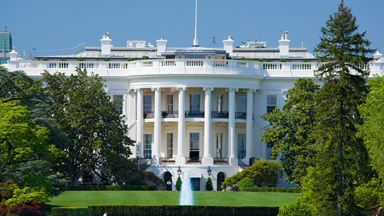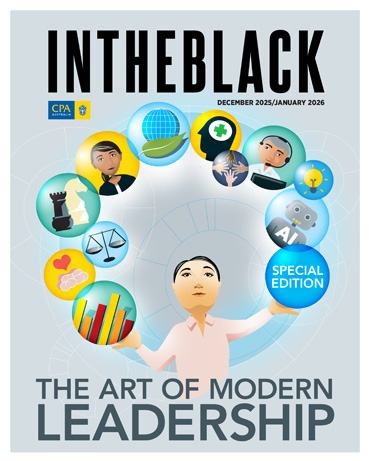Loading component...
At a glance
As one of the chief architects of the Organisation for Economic Co-operation and Development’s (OECD) long-term initiative to stop corporate giants from shifting profits to tax havens, one might expect Pascal Saint-Amans to be somewhat dismayed.

After all, some analysts suggest that the latest iteration of base erosion and profit shifting (BEPS) could be derailed following US President Donald Trump’s executive order in January 2025 declaring the OECD’s tax regulations to “have no force or effect” in America. The Pillar Two proposals seek a global minimum tax of 15 per cent on multinational enterprises (MNEs).
However, Saint-Amans, who is also a partner at Brunswick Group and a former director of the OECD’s Centre for Tax Policy and Administration, is not deterred — and certainly not surprised.
“Many people think Pillar Two will only work if the US implements it, but Pillar Two was designed on the assumption that the US would not back it,” Saint-Amans says.
“Yes, it’s going to be harder for the OECD and countries to tax US companies that are profit shifting. Does this completely undermine the minimum tax? I don’t think so.”
What is BEPS?
BEPS has evolved through several key phases since its inception in 2013, when the OECD and the Group of 20 (G20) sought to curtail the actions of MNEs accused of shifting profits to low or no-tax locations, or eroding tax bases through deductible payments such as interest or royalties.
The original 15-point action plan as part of BEPS 1.0 led to the adoption of significant measures such as country-by-country reporting (requiring MNEs to report global income and taxes paid by jurisdiction) and a Multilateral Instrument (enabling jurisdictions to quickly modify their bilateral tax treaties to better address tax avoidance).
In 2018, the OECD launched BEPS 2.0 with an emphasis on addressing the tax challenges arising from the digitalisation of the economy through its two pillars:
- Pillar One: reallocating taxing rights to market jurisdictions, especially for large digital firms.
- Pillar Two: imposing a global minimum tax rate of 15 per cent under the Global Anti-Base Erosion (GloBE) rules.
While conceding that BEPS’ goals around the digital economy and transfer pricing remain a work in progress, Saint-Amans says the project builds on the considerable efforts of the OECD to usher in an era of greater international taxation cooperation and banking transparency after the 2008 global financial crisis — ending an inertia that had persisted for the best part of a century.
“If you want to fight tax avoidance, you need tax administrations speaking to each other,” he says. “What you have now is much broader tax cooperation, and no-one is really challenging that.”

David Bradbury, a KPMG partner, former assistant treasurer for the Australian Government and former deputy director of the OECD’s Centre for Tax Policy and Administration, agrees that BEPS has helped break down global tax barriers, stating that it represents a “landmark agreement” in multilateral governance.
“One of the enduring legacies of the project is the creation of the Inclusive Framework, which has given countries the opportunity to negotiate in a multilateral way,” Bradbury says.
The impact of US policy on global minimum tax
Since 2021, the focus has been on implementation of the two BEPS pillars, with motivation stemming from OECD estimates that up to US$240 billion (A$364 billion) in tax revenue could be lost to governments each year through profit shifting.

There are fears, however, that US policies could hinder progress. Jenny Wong, tax lead, policy and advocacy at CPA Australia, says Trump’s decision to reject Pillar Two could prompt other countries to reconsider their own commitments and enforcement strategies.
“The US stepping away from global tax negotiations doesn’t stop Pillar Two, but it does make coordination much harder and the path forward more uncertain,” she says.
“Without the US onboard, there’s a real risk of tax fragmentation, and businesses could end up being caught in the middle.”
Wong is nevertheless encouraged that more than 140 countries have signed up to BEPS 2.0, while more than 50 countries — including many in the European Union and the Asia-Pacific region — have already implemented or are preparing to apply the Pillar Two rules.
“So, while global consensus might not be achieved, we are seeing a kind of ‘coalition of the willing’,” she explains. “But long-term stability depends on broader global buy-in.”
The irony is that momentum to prevent tax avoidance increased during Trump’s first term in office with the introduction of the global intangible low-taxed income (GILTI) regime, Bradbury says. While it is US-focused, GILTI has helped normalise the concept of a minimum corporate tax.
“I think Pillar Two will continue to exist. It will survive and thrive,” he says. “It has never required universal implementation for it to be effective.”
Saint-Amans says Trump deserves credit for the “surprise” rollout of GILTI to modernise the rules for taxing intangible assets — a notoriously difficult task — held by American companies. “BEPS didn’t crack the nut there, but Trump did, in a sense, with the GILTI bill.”
Navigating BEPS 2.0 rules
The Trump administration’s stance has caused confusion among some MNEs.

Irene Lee, KPMG partner for global transfer pricing services in Hong Kong, admits that many of her clients who are concerned about tax compliance burdens had hoped that the US’s move could lead to the abandonment of BEPS 2.0.
“But I don't think it will entirely go away, although it does create obstacles,” she says.
This year, Hong Kong has gazetted legislation to effectively implement Pillar Two courtesy of its domestic Hong Kong Minimum Top-up Tax (HKMTT) and Income Inclusion Rule (IIR), effective retroactively from 1 January 2025.
The legislation closely follows OECD rules, while Hong Kong’s response to the undertaxed profits rule (UTPR) — a key piece of the OECD’s effort to limit tax avoidance — has been postponed pending further investigation.
Lee believes Hong Kong is concerned about the US’s tariff regime, but she acknowledges that BEPS 2.0 represents a “compliance burden” and that may especially affect Hong Kong conglomerates. The administrative region does not have a capital gains tax, and it also has an offshore tax exemption on bank-interest income.
“So, there’s a good chance that they will be below the 15 per cent minimum threshold.”
To ease the compliance load, MNEs can check if they fall under any safe-harbour provisions for countries in which the corporate tax rate is above the 15 per cent threshold.
As MNEs continue to respond to BEPS 2.0, Lee recommends they engage quickly and regularly with their tax and transfer pricing advisers. Additionally, they should conduct impact assessments of the tax rules and report back to shareholders.
Early assessments would help MNEs consider if there is any appropriate corporate restructuring that can be done to minimise impact.
Retaliatory tactics
As scores of countries embrace the Pillar Two rules, discussion has turned to Trump’s next likely moves.
In Trump’s One Big Beautiful Bill Act, there is a pledge to penalise foreign owned businesses imposing “unfair foreign taxes”, such as Pillar Two’s UTPR and digital services taxes (DSTs), under Section 899.
Australia would have been a possible target of American retaliation, as it has enacted both a UTPR and a diverted profits tax (DPT) that targets US tech companies.
The US agreed to remove these “revenge tax” provisions after the G7 nations granted the country an exemption from the Pillar Two global minimum tax rules.
While the OECD’s compromise managed to head off the US threat, it could lead to discontent from some of the 140 nations that were already compelled to accept the minimum global tax requirements.
Depending on the final details, there is also concern that the arrangement could lead to a two-tiered system that will need to operate simultaneously, where US-parented groups do not need to pay the 15 per cent minimum tax.
It is a situation Wong believes could weaken efforts to clamp down multinational tax avoidance.
“The G7 deal avoids open conflict over Section 899, but locks in a two-speed global minimum tax. The ’side-by-side’ approach protects US-parented groups from top-up taxes (UTPR and IIR), making this less about global alignment and more about geopolitical compromise,” Wong says.
The G7’s compromise was more pragmatic, she continues, than principled.
“With the US stepping away from Pillar Two, it does make coordination much harder and the path forward more uncertain. Without the US on board, there is a real risk of tax fragmentation, so Australian businesses could end up being caught in the middle.
What is next for BEPS 2.0?
Wong insists that hopes for a global minimum tax are still alive, “but whether Pillar Two reaches its full potential depends on how the next chapter of international cooperation plays out”.
“The real test will be whether countries can stay the course, even without US leadership,” she says.
Bradbury is confident that the BEPS legacy will survive, noting that all other countries that signed up to the agreement in 2021 continue to back it.
More significantly, perhaps, he argues that BEPS will continue to provide a platform for international tax discussions through the Inclusive Framework.
“There are no tax police out there that decide all this,” Bradbury says. “It was decided among countries that were working cooperatively to protect their collective interests.” That being the case, he hopes the progress made to date is not jeopardised by any setbacks.
Saint-Amans is confident that BEPS 2.0 will not unravel because “the bases are solid”. As for the critics who note that Pillar Two has not yet delivered countries a tax windfall, he notes that the main goal of Pillar Two was not to deliver additional money, but to stop profit shifting and tax avoidance.
“Fundamentally, I think Pillar Two has succeeded in stopping the bleeding and, whatever happens with the US, it is a success.”

